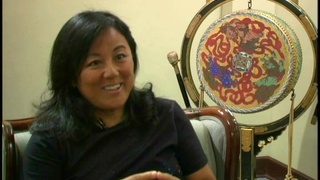Interviews
Bento menu for hostage incident (Japanese)
(Japanese) Back when Ambassador Aoki was in the embassy, when he went outside for...I mean, when he had food catered, it was expensive to order from a hotel, so whenever possible they wanted to make the food at the ambassador’s residence. But you couldn’t really do much in that kitchen, so they wanted to remodel the kitchen and I designed it. They used my design plans to remodel, and that occasion of the Emperor’s birthday was the first time we used the new kitchen. Of course I went as host. So I ended up getting caught up in that event, but in my case, I was only there for a week.
I was let go on December 22, and on January 3, I got a letter from Ambassador Aoki. From inside the residence. He said, given the circumstances, the people inside couldn’t keep holding on, so why don’t I put it all together and decide the menu. Naturally, other types of food were included. There was Chinese food, Peruvian cuisine etc. But there were 58 hostages and what most of them ate was the Japanese food. If you ask why, it’s because there was never a single accident. Not one case of food poisoning.
I started going from that January 4 until April 22. Absolutely no one had any problems with their health. But we never knew when our bento boxes would be brought in. We didn’t know when we would be stopped. So just like Swiss flour (where people use the older flour first), the people would always start with something from the previous bento box. Like Swiss flour. So we’d always put one extra thing inside the bento, something they could put aside to eat later. For example, grilled rice balls. And the hostages knew it. It was obvious. We didn’t say anything, but they knew. I know that because after everyone got out, I asked someone and they said everyone was doing it. So they didn’t eat that one thing until the next bento box came in. That’s the way it was.
So what that means is that the way of making bento boxes that I learned in Japan, that’s extremely well-accepted internationally…it’s not strange at all. I recently met the Foreign Minister at the time, Francisco Tudela. Bottom line is, if you eat Japanese food, your body doesn’t get sick. The nutritional balance was also good. It’s been really praised in a variety of books. I’ve been asked to write a book about the recipes from that incident. I still have the menus I wrote.
Date: April 18, 2007
Location: Lima, Peru
Interviewer: Ann Kaneko
Contributed by: Watase Media Arts Center, Japanese American National Museum



